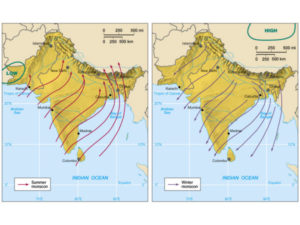Travel Tips
Lorem ipsum dolor sit amet, consectetur adipiscing elit.

Monsoon Winds

Impact of Monsoon on the Indian Economy
1. Impact on Indian Agriculture: The agriculture is the backbone of Indian economy because more than 60% of Indian population engaged in agriculture, which shares around 20.5% in the Indian gross domestic product. In India, water is more valuable than gold for the farmers or the one who engaged in agriculture. In case monsoon is favourable then we have a positive impact or if not favourable then then the prices of the goods increases and the services of other classes of people is diminished. Products of industry do not find a ready market and the supply of raw materials to industries also suffers.
2. Impact on GDP (Gross Domestic Product): If monsoon fails then it will reduce the percentage points from the overall GDP growth of India. This will also have a detrimental effect on demand in the non-agricultural sector.
3. Impact on Balance of Trade: The balance of trade is also dependent on the unexpected and inexplicable changes in the monsoon as if the monsoon is favourable we have a favourable balance of trade and if the monsoon is not favourable we have a negative balance of trade. The failure of the monsoon affects unfavourably the volumes and the balance of India’s foreign trade. The revenue of the government sharply decline due to the fall in the national income and the government is burdened with extra ordinary expenditures. Hence, we can say state’s revenue and income depends on the monsoon every year.
4. Impact on the food supply: If monsoon failed, it will hamper the agricultural production, which would stroke on the food prices.
5. Impact on the hydro-power sector and irrigation facilities: Most of the Indian power project installed on the Perennial Rivers. If monsoon fails, it would lower the water levels that have detrimental effects on the power generation as well as irrigation facilities.
6. Impact on rural economy: India’s rural life revolving around agriculture and allied activities in small villages, where the overwhelming majority of the population lives. As per the 2001 census, 72.2% of the population live in about 638,000 villages and the remaining 27.8% lives in more than 5,100 towns and over 380 urban agglomerations. The unseasonable and pre-monsoon rain damaged the crops, especially those areas where monsoon rain is adequate, and then it would hit the farm output and affects the rural demand.
To conclude, we should not forget the famous quote that ‘Jal Hi Jeevan Hai’. The Monsoon has deep impact on Indian economy because more than 60% population depends on the agriculture. In other words, the monsoon is the life-line of Indian economy just like blood is required for survival of life and so is that without monsoon our agrarian economy cannot survive.